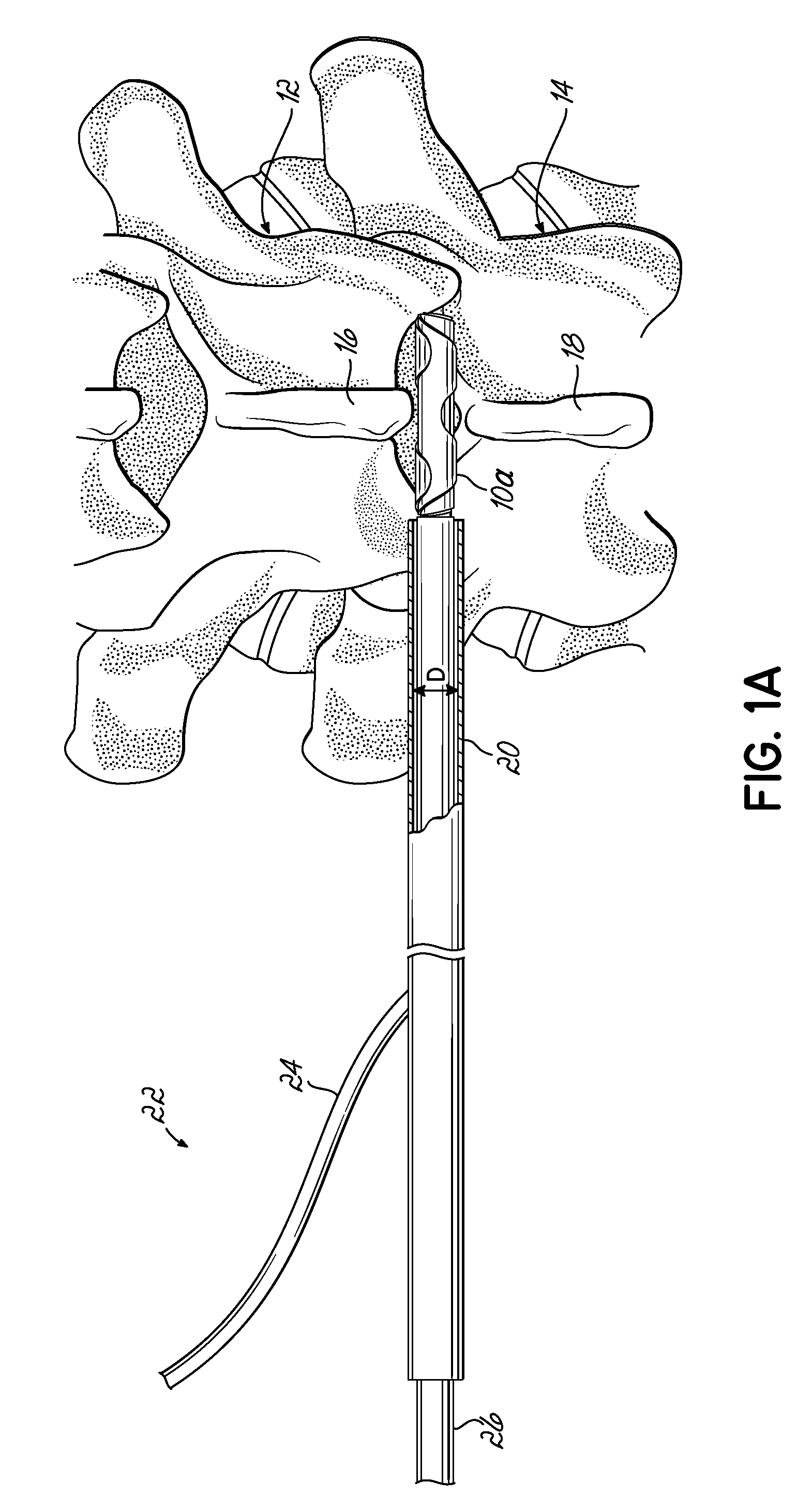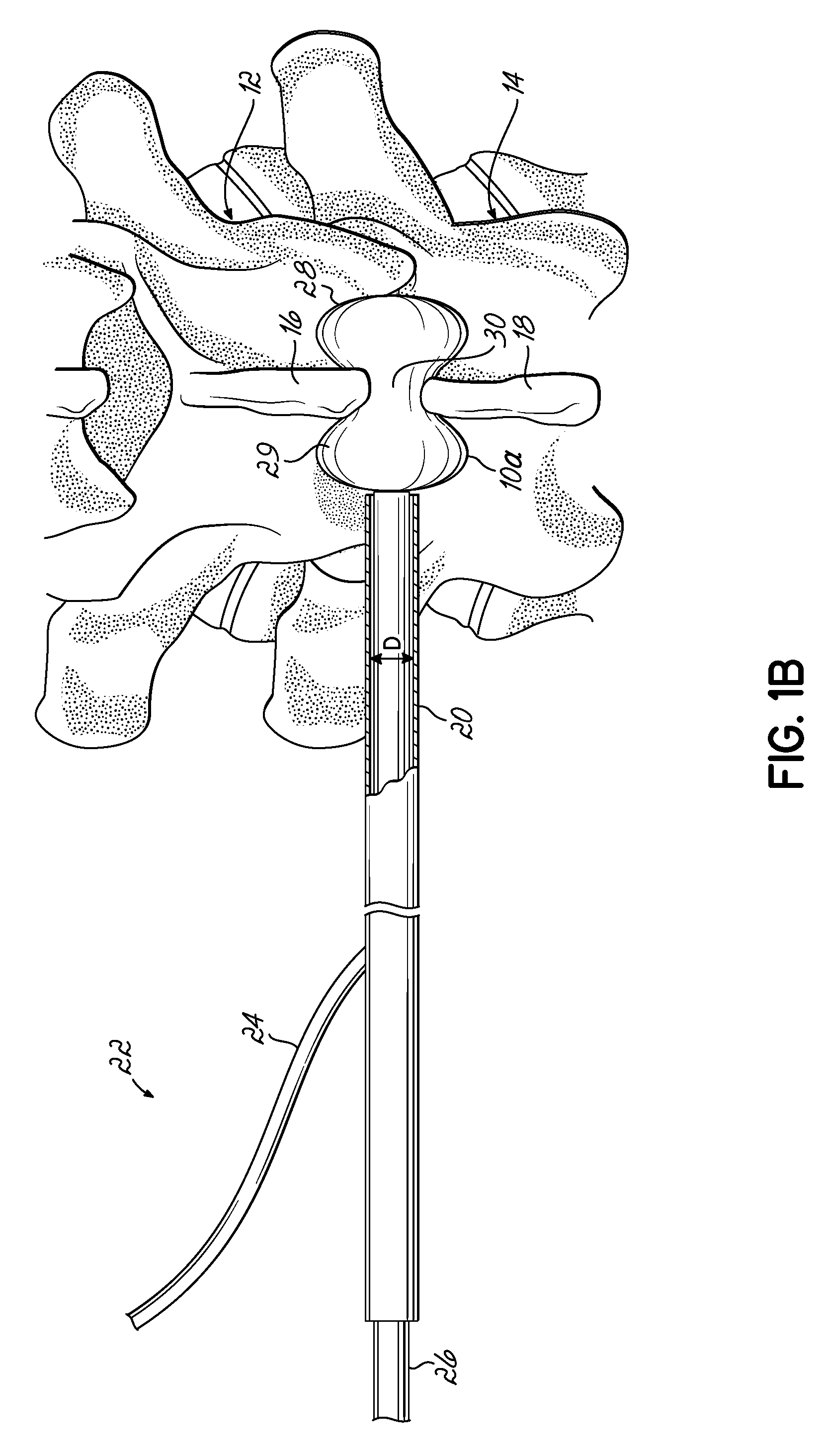In-situ curable interspinous process spacer
a process spacer and interspinous technology, applied in the field of spinal stenosis treatment devices, can solve the problems of facet joint breakage, back and leg pain, and the deterioration of the cushioning disc between the vertebrae, so as to relieve the pressure on the posterior wall, relieve pain, and relieve the effect of pain
- Summary
- Abstract
- Description
- Claims
- Application Information
AI Technical Summary
Benefits of technology
Problems solved by technology
Method used
Image
Examples
Embodiment Construction
[0029]With reference to the Figures, wherein like numbers denote like parts throughout the several views, exemplary interspinous process spacers 10a-c are shown in accordance with the principles of the present invention for maintaining a desired spacing between the spinous processes of adjacent vertebrae 12 and 14. In one embodiment, FIG. 1A illustrates the expandable member 10a in unexpanded form positioned between adjacent superior and inferior spinous processes 16, 18 of the two adjacent vertebrae prior to expansion with a flowable material. The unexpanded, expandable member 10a may be delivered to the desired space through a cannula 20 that defines an access path. In one embodiment, the internal diameter D of cannula 20 is 10 mm or less. In another embodiment the internal diameter D of cannula 20 is 3 mm or less.
[0030]The member 10a may be positioned and exposed in the interprocess space by retracting the cannula 20 from the unexpanded, expandable member 10a or extending the une...
PUM
 Login to View More
Login to View More Abstract
Description
Claims
Application Information
 Login to View More
Login to View More - R&D
- Intellectual Property
- Life Sciences
- Materials
- Tech Scout
- Unparalleled Data Quality
- Higher Quality Content
- 60% Fewer Hallucinations
Browse by: Latest US Patents, China's latest patents, Technical Efficacy Thesaurus, Application Domain, Technology Topic, Popular Technical Reports.
© 2025 PatSnap. All rights reserved.Legal|Privacy policy|Modern Slavery Act Transparency Statement|Sitemap|About US| Contact US: help@patsnap.com



